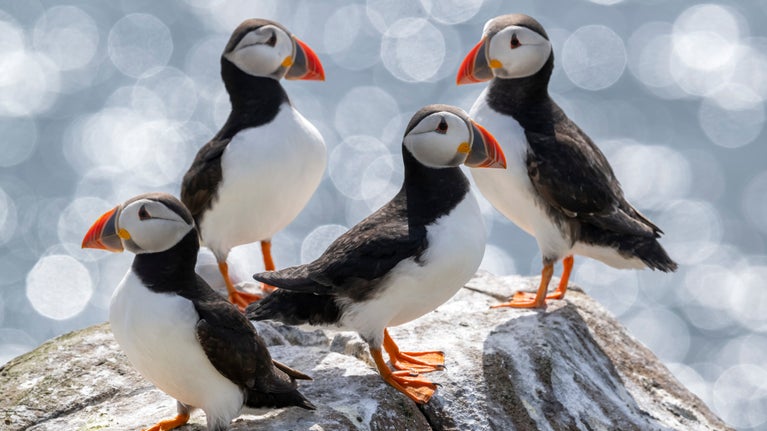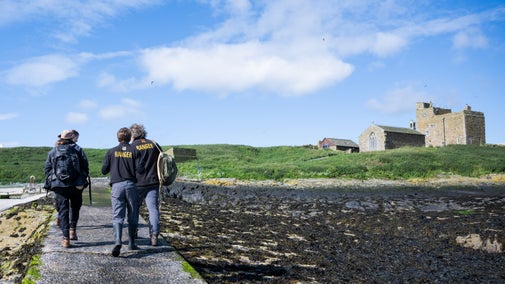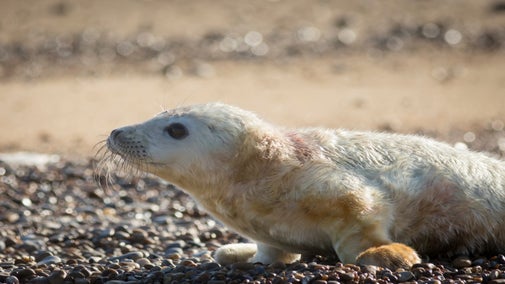Your support helps:
- provide a year-round ranger presence on the Farne Islands – crucial for protecting and monitoring the wildlife, particularly seals, puffins and other seabirds.
- fund conservation work and monitoring activity such as puffin counts, bird ringing and seal tracking to help monitor trends and feed into national data on populations.
- inspire future generations about the seabird colonies and the surrounding marine habitat through education and research.
- keep the islands safe and accessible with boardwalk repairs and habitat maintenance.
More about the wildlife in the Farne Islands
A wildife haven only 2.5 miles off the Northumberland Coast, the Farne Islands are made up of clusters of islands forming the Inner and Outer Farne Islands.
Together, the islands are home to a breeding colony of 200,000 seabirds of 23 different species, including eider duck, guillemot, razorbill, Arctic tern, kittiwake and puffin.
The islands are designated as a National Nature Reserve (NNR) and Site of Scientific Interest (SSSI) as well as a Special Protected Area (SPA) and Marine Conservation Zone (MCZ) in recognition of the internationally significant populations of breeding seabirds and grey seals they host each year.
The remote location, lack of ground predators, the availability of food and suitable nesting areas, as well as vital conservation work and research has allowed seabird populations here to thrive.
Seal pupping sanctuary
As summer turns to autumn, another of the islands’ famous residents take centre stage as seal pupping season gets underway. The Farne Islands are home to one of the largest Atlantic grey seal colonies on the east coast of England, with around 2.5 per cent of the pups born annually in Britain being born on the islands.





